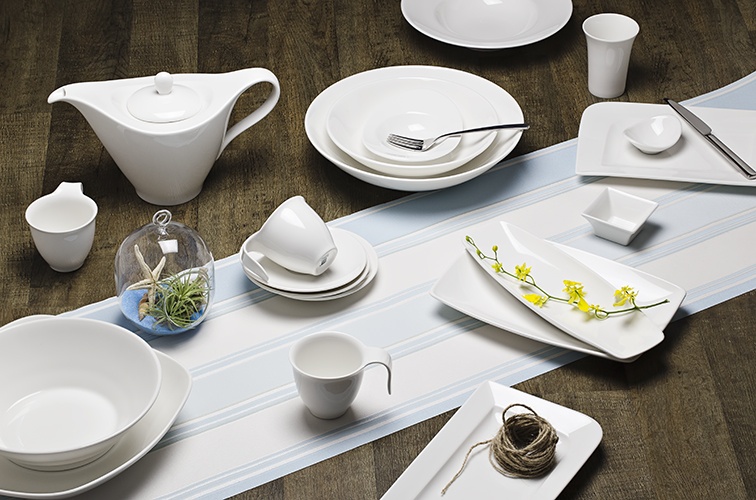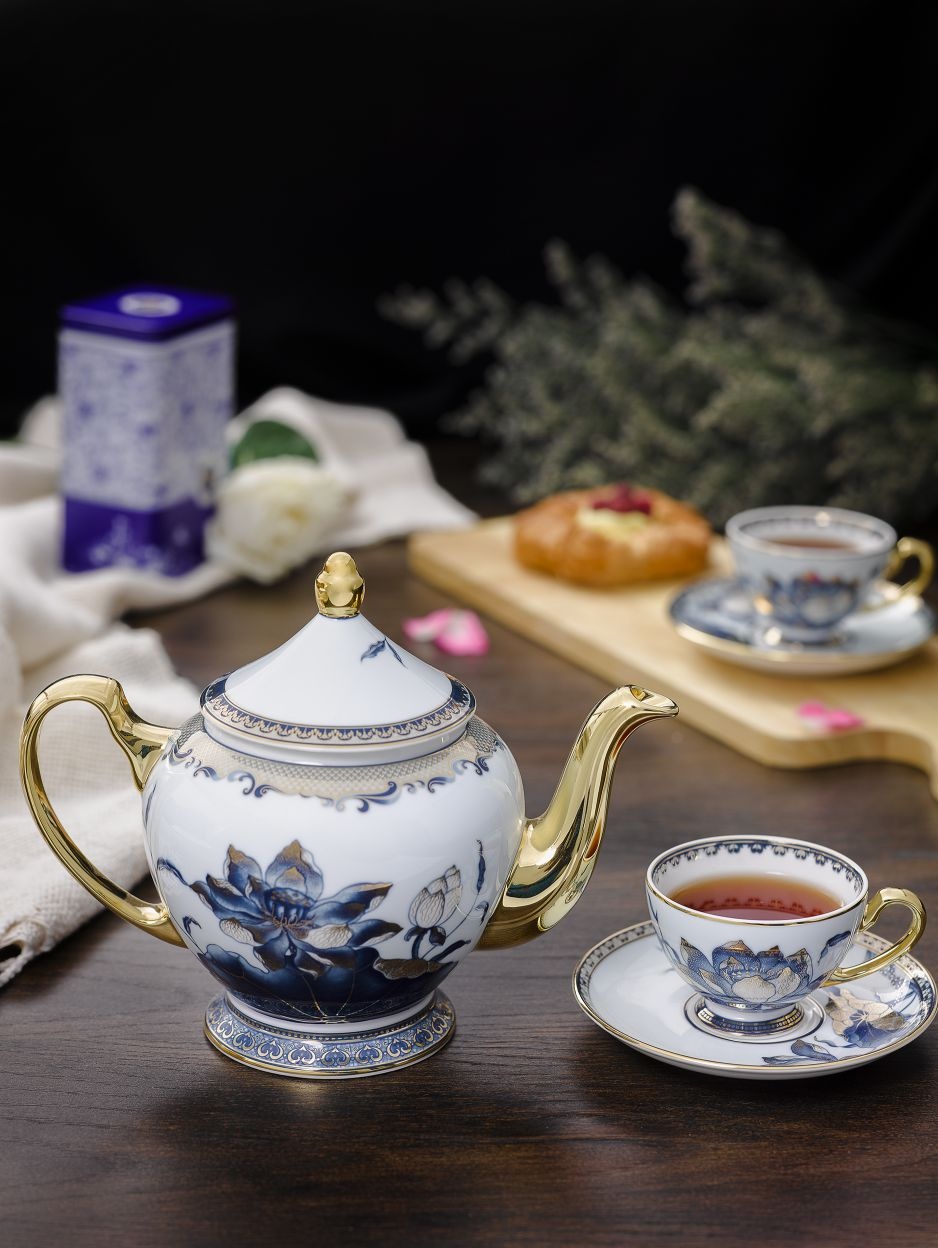 |
| Ceramics and pottery of Vietnam conquer the hearts of consumers at home and abroad |
Vietnam is proud to be one of the world’s cradles of traditional handicrafts with a long development history and 2,017 craft villages. These villages have become the pride of Vietnamese handicrafts in the global market, such as Bat Trang and Chu Dau for their pottery, Phu Vinh for its bamboo and rattan weaving, and Van Phuc for its silk.
Mastered and talented craftspeople make enviable products and works of art for consumers in many countries, thereby carrying a positive image of Vietnam into the world. Developing handicrafts is one of the top concerns of the government that sees these brands as a way to further promote its strategic interests.
Mr. Hoang Minh Chien, Deputy Director of Trade Promotion Department, Ministry of Industry and Trade, Ministry of Industry and Trade, said that after 18 years of implementing the program of voting national brands of seven brands, we have witnessed the continuous growth of many domestic enterprises.
 |
By 2018, this had grown to 97, and this year we have registered 124 businesses and their brands.
At the first selection in 2008, we saw only 30 selected companies with their products. By 2018, this had grown to 97, and this year we have registered 124 businesses and their brands.
For example, the national brand recognized enterprise in 2018 achieved revenue of about 907 trillion VND (39.4 billion USD), export turnover reached 130 trillion VND (5.6 billion USD), contributing 85 trillion VND (3.7 billion USD) to the state budget and created 340,000 jobs.
Vu Ba Phu also said that, the Ministry of Industry and Trade has supported businesses in difficulty. After the first months of the health crisis, the domestic market was redefined.
Right from the beginning of the year, following the direction of the Government, the Ministry of Industry and Trade has worked with ministries, branches and localities to implement supply-demand activities across the country to remove difficulties for businesses in production. and distribution.
In addition, to support businesses with high quality brands, we have also been integrating selected brands into national promotions such as the Clean Food Program to vote Vietnamese products for local people.
The integration of such programs has helped grow the domestic market since the beginning of the year, despite the economic consequences of the pandemic. This shows that the communication, promotion and support efforts of the Ministry of Industry and Trade and its agencies so far have been effective.
 |
| The Lotus Pearl tea set is one of the masterpieces of Minh Long Ceramics, using lotus as the main decorative motif |
Preserving a craft over millennia
The long history of pottery has experienced good and bad times, but Vietnamese craftsmen from different generations have always been putting their heart and soul into their products. Nowadays, Vietnam has a wide range of pottery products, ranging from raw earthenware to delicate home decor items with various glaze colours. Through these products, customers can see the creativity and skillfulness of the craftsmen, and also sense the traditional values of Vietnam.
With the advancements of technology, modern ceramics products are often made completely automatically, and high-temperature ceramic coating techniques are applied to improve the durability of the products and ensure a safe and long-lasting quality for the customers. All of these ceramic products are quite diverse in designs, types, and usages.
The story of Vietnam’s premium porcelain brand Minh Long is a journey of a speck of dust which was born out of the marriage between sky and earth, formed and embedded in glaze and baked in a holy fire, then decorated and finally brightened with the Vietnamese soul. The cultural beauties and images are loaded with cultural traditions of the country and engraved in each of the products.
Bau Truc is one of the oldest pottery villages in Southeast Asia. It is located in Binh Thuan province, the sanctuary of the Cham. All products here are created with bare hands without the support of pottery wheels. The decoration is usually made up of curved lines, resembling rivers and water, as well as scalloped dots and plant patterns.
After the shaping and decorating process, Bau Truc pottery products are piled up, covered in straw, and then fired at 700-900℃. The final colours of products are usually yellow, pink-red, black-grey, and brown. Each one of Bau Truc’s pottery products is one of a kind, and the craftsmen are proud of these because of their uniqueness and embodied features of the Cham culture.
Chu Dau Ceramic JSC has set itself the mission to revive the ancient Chu Dau ceramic line, preserving and developing ancient techniques with enthusiasm and love for the craft. The characteristics of Chu Dau ceramics are illustrated in the style and colour of the enamel and elaborate motifs. These products are made for both domestic consumption and export to the world market.
Chu Dau pottery is traditional pottery from Hai Duong province, where it appeared around the 13th century. After settling, filtering, and removing impurities, white clay is used to create the basic shapes on traditional turntables. Chu Dau’s products are said to be “thin as paper, clear as jade, white as ivory, and ringing like a bell”.
Along with Chu Dau village, Bat Trang village also has a long history of ceramics, starting from the 15th century. The village is located in Hanoi’s Gia Lam district. Nguyen Huu Thuc, general director of Chu Dau JSC, said that to deliver high-quality products, the Bat Trang’s and Chu Dau’s craftsmen have to go through several steps, such as choosing proper soil, shaping, creating patterns, glazing, and heating products.
Bat Trang village is known as the only one in Vietnam that preserves many kinds of antique enamel. Among the different enamel coatings, brown is the most common colour, though many products are also made with blue, white, celadon, and reef enamel.
Starting out in the same period as Bat Trang village, Phu Lang village flourished in Que Vo district, Bac Ninh province. The main feature of Phu Lang pottery is the method of embossing the form of tapping rather than using moulds that create shapes on the wheel. To this day, the ceramic products of Phu Lang are fired using charcoal furnaces. The products are mainly ceramic appliances like chums and jars made from red clay.
Thanh Ha village, one of the most famous pottery craft villages in Vietnam, is located in Hoi An city. Throughout its 500-year history, Thanh Ha has been famous for its durable terracotta goods. Made of special clay, Thanh Ha’s ceramic products have a bright red-orange colour, a unique porosity, and are lightweight. A potter can create natural or decorative patterns as required by carving out the products. Thanh Ha’s ceramics are commonly fired in a wood stove.
 |
| The Binh Phu Quy vase is one of Chu Dau’s signature products |
Spreading tradition across the world
Ceramics are among the fastest-growing industries in Vietnam. During the economic contraction of 2020, ceramics grew 3.5 per cent in the first three quarters compared to 2019. The main export markets for Vietnamese ceramics are the US, Japan, and China. Vietnamese ceramics and pottery can now be found in over 50 foreign markets. Nearly $47 million worth of ceramics were exported in June 2020, an increase of 10 per cent compared to June 2019.
According to statistics of the General Department of Customs, the export turnover of fine art ceramics in July reached $19.55 million, up 0.6 per cent on-month and 43.7 per cent on-year. In the first seven months of 2021, the export value of fine art ceramics reached $143.22 million, up to 51.5 per cent on-year.
In July, exports of ceramics to the EU reached $6.82 million, up 12.1 per cent on-month and 30.8 per cent on-year, bringing the total export in the first seven months of 2021 to this region to $42.11 million, up 33.3% on-year.
Also in July, the exports of ceramics to Belgium increased sharply, reaching $1.78 million, an increase of 870.3 per cent compared to June and 2,000 per cent on-year, catapulting Belgium to be the largest importer of Vietnam’s ceramics.
Exports to the Netherlands and France in the first seven months of 2021 also showed a sharp increase of 29.1 and 50 per cent, respectively, compared to the same period in 2020.
Vietnamese brands like its famous ceramics are also supported by trade promotion initiatives like the Vietnam Value Programme which aims at increasing the products’ brand value in domestic and overseas markets. The Vietnam Value Programme was approved by the prime minister with Decision No.253/2003/QD-TTg from 2003, and the Ministry of Industry and Trade has been assigned to coordinate with other ministries and agencies to implement the programme.
The programmes extended goal is to create an image of Vietnam as a country with richness, diversity, and high-quality goods and services, thereby enhancing the competitiveness of Vietnamese brands in the course of economic integration.



